Your Costa Rica Ziplining Questions Answered!
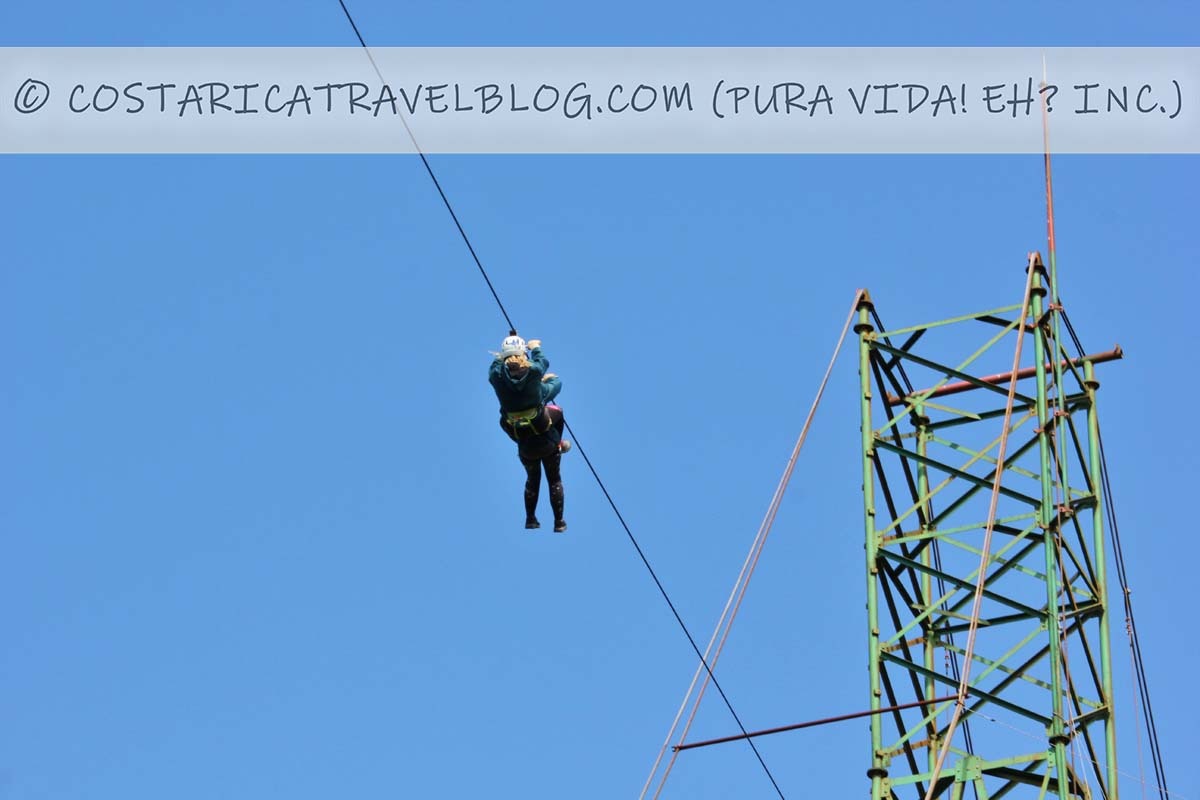
Last updated on July 19th, 2021 at 03:15 pm GMT-6 (Costa Rica time)

Written by Nikki Solano
Nikki is the CEO of Pura Vida! eh? Inc. (Costa Rica Discounts), and the author of the guidebooks Moon Costa Rica (2019, 2021, 2023, and 2025 editions) and Moon Best of Costa Rica (2022 edition) from Moon Travel Guides. Together with her Costa Rican husband, Ricky, she operates the Costa Rica Travel Blog, created the online community DIY Costa Rica, built the Costa Rica Destination Tool, oversees the brand-new (summer 2023) Costa Rica Travel Shop, and designed the Costa Rica Trip Planning 101 E-Course. Also, Nikki wrote the Costa Rica cover feature for Wanderlust Magazine's sustainability-focused Travel Green List issue, showcased Costa Rica destinations and experiences on Rick Steves' Monday Night Travel show and podcast/radio show, and served as the Costa Rica Destination Editor for Essentialist, a luxury travel brand. Want to show your appreciation for her free article below? Thank Nikki here. ❤️️
Do you want to know our picks for the BEST ZIPLINE and the BEST ZIPLINE TOUR in Costa Rica? They are featured on DIY Costa Rica!
Want to save money in Costa Rica?
Our sister site, Pura Vida! eh? Inc., has ziplining tour discounts. Con mucho gusto (you’re welcome) and pura vida!
🙂
Get the Costa Rica info you need by browsing our article's TABLE OF CONTENTS:
Ziplining in Costa Rica is a blast!
If you plan to zipline in Costa Rica, you may be asking yourself the same ziplining-related questions that thousands of other travelers ask. On the chance that you are, you won’t want to miss our list of some of the most popular Costa Rica ziplining questions we receive, and our answers to each. No matter your concern, we’ve got you covered.
To learn more about Costa Rica ziplining tours, specifically ziplining tours in the La Fortuna / Arenal and Monteverde regions, see our related blog post:
Best Ziplines In Costa Rica: Comparing 6 In Arenal And Monteverde
FAQ: Our answers to your Costa Rica ziplining questions
Is previous ziplining experience required to participate in a Costa Rica ziplining tour?
No. All Costa Rica ziplining tours include a safety demonstration (and all necessary ziplining equipment) regardless of a participant’s level of experience with the activity.
Do I need to be in good physical condition in order to participate in a Costa Rica ziplining tour?
Yes. You do not need to have completed an Ironman competition or run a marathon to do so, but you should be mobile (i.e., able to walk without issue), have the ability to use your arms to hold onto ropes and/or cables if/when required (and the flexibility to put one arm above/behind your head, if the ziplining tour you have selected requires it), have the ability to bend your knees and cross your legs, and not have any preexisting medical conditions that could be worsened by adrenaline-inducing activities, sudden and jerky movements, and/or physical exercise.
How old do you have to be to participate in a Costa Rica ziplining tour?
This depends entirely on the canopy tour operator you choose for your ziplining tour, as some provide more challenging courses and activities than others. In addition, although most tour outfitters have a minimum age requirement for participation in their ziplining tour(s), limits are sometimes enforced according to the height and weight of each participant to ensure that each individual will adequately fit the safety equipment provided.
Costa Rica ziplining tour minimum limits (age, height, weight, etc.) by tour operator for the top 20 most popular tour zipline tour options, categorized alphabetically:
100% Aventura’s Canopy Ziplining Tour (Monteverde): 5 years old
Arenal Mundo Aventura’s Canopy Ziplining Tour (La Fortuna/Arenal): 7 years old, 3’10” tall, 51 lbs
Congo Trail Canopy Ziplining Tour (Guanacaste): 5 years old (younger with a guide)
Ecoglide’s Canopy Ziplining Tour (La Fortuna/Arenal): 6 years old (ages 2-5 with a guide)
Hacienda Guachipelin’s Canyon Canopy Ziplining Tour (Rincon de la Vieja): 4 years old
Los Cañones Canopy Ziplining Tour (La Fortuna/Arenal): 4 years old
Midworld Costa Rica’s Canopy Ziplining Tour (Manuel Antonio): 4 years old
Miss Sky Canopy Ziplining Tour (Nosara): 5 years old
Monteverde Extremo’s Canopy Ziplining Tour (Monteverde): 5 years old
Original Canopy Tour’s Canopy Ziplining Tour (Drake Bay): 5 years old
Original Canopy Tour’s Canopy Ziplining Tour (Monteverde): 5 years old
Original Canopy Tour’s Canopy Ziplining Tour (San Jose): 5 years old
Osa Canopy Ziplining Tour (Puerto Cortes): 4 years old
San Luis Canopy Ziplining Tour (San Ramon): 4 years old
Selvatura’s Canopy Ziplining Tour (Monteverde): 4 years old
Sky Adventures Arenal’s Sky Trek Canopy Ziplining Tour (La Fortuna/Arenal): 5 years old
Sky Adventures Monteverde’s Sky Trek Canopy Ziplining Tour (Monteverde): 5 years old
Terraventura Canopy Ziplining Tour (Puerto Viejo de Talamanca): 4 years old
Titi Canopy Ziplining Tour (Manuel Antonio): 4 years old
Wingnuts Canopy Ziplining Tour (Samara): 3 years old
How many cables will I zip across during my Costa Rica ziplining tour?
This answer depends entirely on which canopy tour operator you plan to zipline with. In general, most Costa Rica ziplining tours offer between seven and twelve cables.
How long are the cables offered with my Costa Rica ziplining tour?
This answer depends entirely on which canopy tour operator you plan to zipline with. Cable lengths range significantly, and not only between tour operators but also from one cable to the next within the same tour. In general, most Costa Rica ziplining tours offer a combination of shorter cables (around 50 meters) and longer cables (closer to 1000 meters).
How high are the cables offered with my Costa Rica ziplining tour?
This answer depends entirely on which canopy tour operator you plan to zipline with, and at which Costa Rica destination the tour is located. Since ziplining tours are offered in nearly every popular city in the country, inland areas that are mountainous and strewn with valleys tend to offer the most significant cable heights.
Can I try a zipline cable before I commit to doing a Costa Rica ziplining tour (i.e., are there test cables)?
In some cases, yes. A number of canopy tour operators offer a trial zipline that participants can experience before embarking on the entire journey. In most cases, the test zipline is the first zipline of the tour’s course. When this is true, following participation in the trial zipline and assuming that the experience was enjoyed, participants continue on to the second zipline cable, then the third zipline cable, and so on throughout the remainder of the course. It is important to note that when a canopy tour operator does not offer a trial zipline, there is typically no way to stop or exit the tour once it has begun, so the tour must be fully completed.
When and how do I slow down and/or brake during my Costa Rica ziplining tour?
All Costa Rica ziplining tours offer a safety and equipment demonstration at the start of the experience. During the demonstration, participants learn how to properly maneuver the equipment to slow themselves down while ziplining; this is either performed using a hand-braking technique or else an automatic braking technique (please continue reading below for an explanation of each). The demonstration will also explain which signals the participants need to look and/or listen for that indicate it is time to employ the braking technique learned. Although the visual and/or auditory signals used by tour guides vary across tour operators, the most common include whistling, arm-waving, and/or shaking the zipline cable.
What is the difference between a hand-braking zipline system and an automatic braking zipline system?
The most common braking system utilized by Costa Rica ziplining tours is the hand-braking system (this system is used by the majority of canopy tour operators in Costa Rica, including canopy zipline tours we have written about elsewhere on our blog in the related posts Arenal Mundo Aventura: La Fortuna Canopy Ziplining Tour and Selvatura Monteverde: Ziplining, Hanging Bridges, Butterfly / Hummingbird Gardens, And A Reptile / Amphibian Exhibit In The Cloud Forest). This system requires participants to wear a special glove complete with a thick pad that allows pressure to be placed on the zipline cable behind the tour participant’s head. The amount of pressure applied is determined by the tour participant (upon instruction by the tour guide); to slow themselves down, tour participants apply pressure to the zipline cable by pressing down on it (to regain speed, tour participants simply release pressure on the zipline cable by slightly lifting their hand off of it). In contrast, Sky Adventures’ Arenal and Monteverde parks utilize an automatic braking system (specifically, the parks’ Sky Trek canopy zipline tours, which we have written about elsewhere on our blog in the related posts Sky Adventures Arenal: Ziplining, Hanging Bridges, And Tram Rides In La Fortuna and Sky Adventures Monteverde: Ziplining, Hanging Bridges, And Tram Rides In The Cloud Forest). Despite the use of the word “automatic” in its name, the automatic braking system still requires participants to slow themselves down manually, however instead of requiring tour participants to impose pressure on the zipline cable directly, they are instructed to jostle an apparatus attached to the cable (rapidly shifting it back and forth to the left and to the right) which imposes pressure on the zipline cable on the participant’s behalf. Overall, both systems require tour participants to actively employ a braking technique that is both demonstrated by tour guides at the start of the tour and signaled by tour guides throughout the tour, however, the application of the technique across the two systems is what varies.
Which Costa Rica ziplining tour braking system is safer?
Ambiguity seems to cloud the discussion of which Costa Rica ziplining technique is safer for braking: a hand-braking system or an automatic braking system. With respect to the technique itself, we see little difference in safety across the two, as both appropriately accomplish the task they set out to achieve, which is to allow tour participants to slow themselves down as they approach the end of the zipline cable. This being said, with user error in mind, the argument could be made that there is a greater opportunity for self-inflicted injury to be caused by the hand-braking system, as it requires the participant’s hand (shielded by a glove) to be positioned close to the zipline cable (in contrast, the automatic braking system does not). When a tour operator’s safety and equipment demonstration is sufficiently provided, and tour participants correctly employ the braking system learned, injury should not result from the use of either braking method.
What happens if I stop halfway along the zipline cable?
Most ziplines are constructed in a way that allows you to glide from one end of the line to the other without stopping. However, due to factors like a participant’s weight, wind speeds, and wind angles, it’s possible you may not make it all the way across one or more cables. There’s an easy solution to this problem, which most tour guides describe in their pre-tour safety demonstration. In short, the solution involves turning your body around (so you’re facing the start of the cable and have your back to the cable’s end) and using your hands to pull yourself along the cable the rest of the way. Click on the video below to watch Ricky demonstrate the act during a live canopy tour.
Will I see wildlife during my Costa Rica ziplining tour?
Unfortunately, this is impossible to predict, as the act of wildlife spotting can never be 100% guaranteed. This being said, we typically spot a variety of birds and butterflies while ziplining, and we are regularly serenaded by the forest’s natural soundtrack of bird calls and cicada buzzes among the cables’ high-pitched hums. The trouble with trying to accomplish more in-depth wildlife-spotting during a fast-paced activity such as ziplining, however, is that the nature of the fast-paced tour makes it impossible to stop along the way to study any fauna seen. As a result, to avoid disappointment, our best recommendation for all Costa Rica ziplining tour participants is to recognize in advance that the activity is an adrenaline-inducing adventure tour–not a wildlife-focused tour–but that a variety of critters may be encountered along the way.
What happens if it rains the day of my Costa Rica ziplining tour?
Given that Costa Rica is part rainforest, rain is inevitable. For this reason, the majority of tours and activities run rain or shine. However, in the event of extreme weather, such as significant rainfall or high winds that would make the zipline cables dangerous to run, the ziplining tour would be canceled by the tour operator.
What happens if my Costa Rica ziplining tour reservation is canceled?
In the event of a rare ziplining tour cancelation issued by a canopy tour operator, the tour operator will make an attempt to reschedule the original ziplining tour experience for a different day/time (usually the next day). If/when neither of these solutions is possible, payment for the canceled tour is not required; if no prepayment has been provided to the tour operator, then no payment upon tour cancelation would be due, and in the event that a prepayment has already been provided to the tour operator, a refund would be issued.
Are Costa Rica ziplining tours ever canceled for reasons other than high rains/winds?
Not usually. We cannot say “never” because life is full of surprises and anything is possible. However, throughout our entire history ziplining in Costa Rica and working with canopy tour outfitters, we can only remember a few times when ziplining tours were canceled due to non-rain/wind issue (the cancelations were due to scheduled maintenance and the fallout of a tropical storm that hit Costa Rica). While cancelations that result from high rain/wind levels are rare, cancelations that result from other causes are even more infrequent.
What do I wear for my Costa Rica ziplining tour?
In short, wear comfortable clothing that you don’t mind wearing a harness in or getting dirty. Most participants wear loose shorts shorts or pants (ideally ones that won’t bunch up) with a t-shirt or tank top. Running shoes or strap-on sandals are a must as flip flops or the use of other unsecured footwear is not permitted. Hats are also not permitted, as a helmet must be worn during the tour (if you have long hair, consider leaving your hair down or tying it in a low ponytail/bun to prevent discomfort while wearing the helmet). Do not wear any valuable jewelry or accessories to avoid losing them in the forest. On days when it rains (or has rained), sometimes wet/damp equipment can leave metal/rust stains on clothing; to err on the side of caution, wear clothing that you don’t mind discarding in case it gets stained during the tour.
What do I bring for my Costa Rica ziplining tour?
In addition to the clothes you plan to wear during the ziplining tour (as described in our answer to the question “What do I wear for my Costa Rica ziplining tour” above), plan to bring very little; carrying purses and/or backpacks is not permitted. Although some canopy tour operators offer locker use onsite, others do not, so there may not be a secure place to leave your belongings. Apply a high SPF waterproof sunscreen for adequate sun protection prior to participation in the tour to avoid needing to bring a bottle of sunblock with you. Give any medication you may need to take throughout the course of the tour to your tour guide for safekeeping. If possible, wear clothing that contains a zippered pocket that you can keep your cash (to tip your tour guide and/or purchase souvenirs with at the end of the tour) and any other must-have items (such as car or hotel keys) on your person during the tour.
Is there an option to buy photos or videos as a souvenir of my Costa Rica ziplining tour?
In some cases, yes. A number of canopy tour operators offer photos and/or videos for purchase at the end of each ziplining tour. Although the cost varies, the photo and/or video souvenirs typically range in price from $10.00 to $40.00.
Are meals included with Costa Rica ziplining tours?
In most cases, no. The majority of Costa Rica ziplining tours last two to four hours and a meal is not automatically included. Many canopy tour operators do offer a restaurant onsite and offer the option to add a meal (typically lunch) to their ziplining tour excursion and/or reserve a package that includes a meal. Some night ziplining tour options include dinner with their tour cost.
Are bathrooms provided throughout Costa Rica ziplining tours?
In most cases, no. In general, canopy tour operators provide an adventure park, meeting spot, or center where tour operations take place, and bathrooms are provided at this hub. Once the tour has departed from its starting point, very rarely are bathrooms encountered along the route, as most canopy tour experiences lead participants through/over sections of undeveloped forest.
Do I tip my Costa Rica ziplining tour guide? How much do I tip my Costa Rica ziplining tour guide?
Although Costa Ricans tend not to tip, tipping is a common practice exercised by many foreign travelers who opt to visit Costa Rica, and as a result, it has come to be expected by tour guides who offer a valuable service worthy of appreciation. For tipping amount recommendations (assuming your ziplining tour guide was friendly, knowledgeable, fair, safe, and contributed to your enjoyment of the Costa Rica ziplining experience), aim for 10% of your ziplining tour’s cost, or 15% if you’re feeling generous. If you were serviced by a variety of tour guides, consider tipping 20% of the tour’s cost and splitting it among the group. If you would prefer not to tip your tour guide(s) directly, most canopy tour operators offer a tip box that you can contribute funds to which are divided across the day’s employees. For more information about tipping recommendations, don’t miss our related blog post What To Know About Tipping In Costa Rica.
How long will it take to get to the Costa Rica ziplining tour site?
This answer depends entirely on which canopy tour operator you plan to zipline with and where you plan to depart from. Since ziplining tours are offered in nearly every popular city in the country, the drive time could be anywhere from ten minutes to four hours long. If you have a specific Costa Rica ziplining tour in mind, as well as a specific departure location, please post these details as a comment at the bottom of this page and we will respond with an approximate driving duration for the route.
Can I drive myself to and from the Costa Rica ziplining tour site?
In most cases, yes. For many Costa Rica ziplining tours, the tour operator has an adventure park, meeting spot, or center nearby where the ziplining tour is run. When this is present, travelers may drive themselves to and from the meeting spot if they would prefer to do so, as secure parking is almost always available onsite.
Our Costa Rica ziplining tips: Important things to know before you go
In addition to the questions posed and answered above, familiarize yourself with our helpful Costa Rica ziplining tour tips, advisories, and other important things to know.
It is a requirement to wear secure shoes, a harness, and a helmet when participating in a Costa Rica ziplining tour.
The use of a harness and a helmet during a Costa Rica ziplining tour is nonnegotiable. So too is the requirement to use secured footwear; flip flops and other shoes that can slip off easily are not permitted. In fact, many tour operators will deny travelers participation in the tour or require them to purchase running shoes or strap-on sandals onsite when improper tour footwear is presented.
No Costa Rica ziplining tour operator wants to see any harm done to any traveler (nor do they want to risk their company’s reputation), so if a tour was ever unfit to run, the day’s excursion would be canceled.
One of the most common questions we are asked about ziplining in Costa Rica is: “is it safe?”. While recognizing that to a degree risk is inherent in all adventure activities (it is unavoidable), the short answer is, “Yes, it is safe.” However, we could also add, “…the ziplining tour operator wouldn’t risk the lives of its tour participants and tour guides if it weren’t.” If a ziplining tour on any given day is a go (provided the tour operator can be trusted), the course is considered safe to run.
If you can, try to avoid the most common mistake made while participating in a Costa Rica ziplining tour: braking too early.
The most common mistake that Costa Rica ziplining tour participants make (especially first-time tour participants) is that they brake too early before the end of the zipline cable. Likely caused by apprehension over approaching the end of the cable too quickly, a number of zipline tour participants apply the braking technique either too strongly or too early, which causes them to come to a stop partway along the zipline cable. If and when this happens, tour participants should not panic–not only do many other travelers experience the same shortcoming, but the problem is easy to fix. A detailed explanation of what to do in this situation is provided to tour participants during pre-tour safety and equipment demonstrations, however, in short, the solution requires tour participants to turn themselves around so they are facing the direction they departed from and pull themselves along the cable to its end using a hand-over-hand technique behind their head. Although the feat may sound complicated, it is not difficult to accomplish, and in the event that help is needed, a tour guide can meet a tour participant on the cable to assist in the task.
QUESTION TO COMMENT ON: Have a Costa Rica ziplining tour question that we haven’t yet answered above? Leave it for us below!
Pura vida!

Hey, Costa Rica Travel Blog reader, thank you for visiting and reading our blog! We're truly grateful for your time and preference.
Do you know that your spam-free reading experience is most important to us? Unlike some other Costa Rica blogs, we do not to sell your personal information, and we choose not to display ads, sponsored content, or affiliate marketing on our blog so we can keep your visit as distraction- and junk-free as possible. Because we prioritize your privacy, we don't earn money when you visit us, when you sign up for our e-course, or when you click on our links, which means the time and work we put into this blog—including its 300+ articles—is entirely voluntary! If you find our content valuable, and you'd like to thank us for making the trip-planning process easier and your Costa Rica vacation more enjoyable, please consider making a small donation ($1, $2, $3, or an amount of your choosing) to our blog. Doing so is a great way to pat us on the back if you feel we deserve it. 😊 Pura vida, amigos!
Click on the button above to donate through PayPal. (If you cannot see the PayPal button above, click here.) A PayPal account is not required to make a donation; credit and debit cards are also accepted. PayPal donations are confidential; we never see your payment details.
Love our blog? Check out our other Costa Rica-related projects, too:

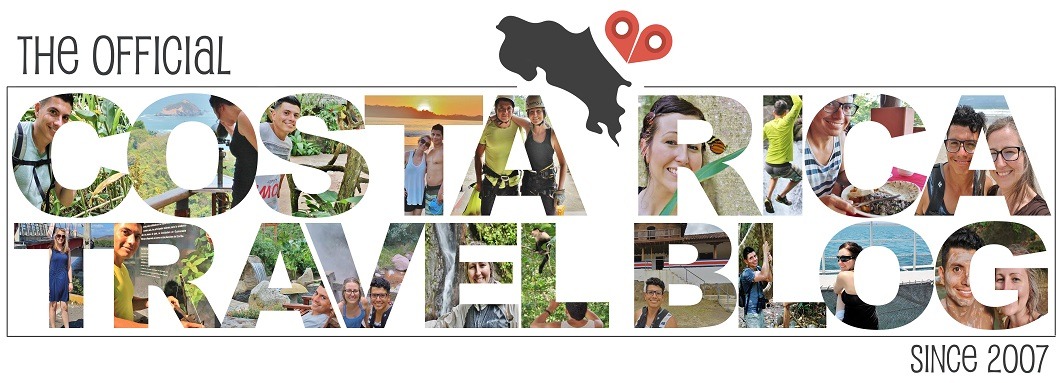

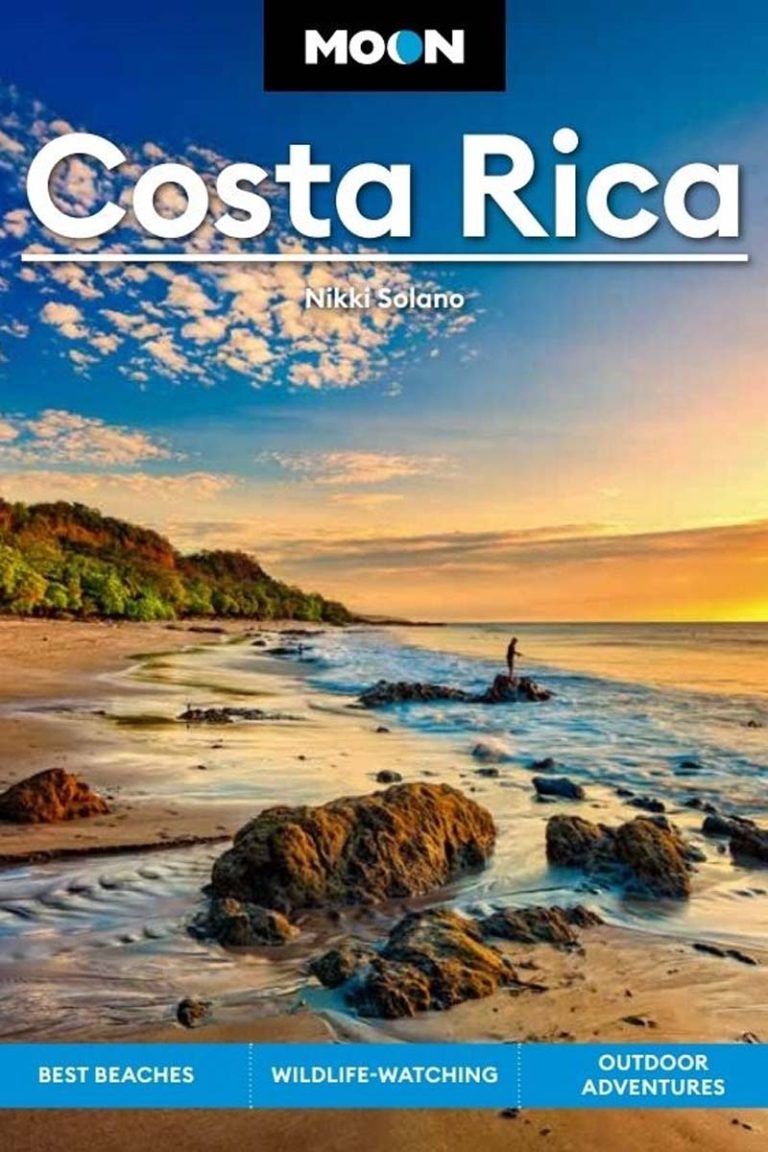
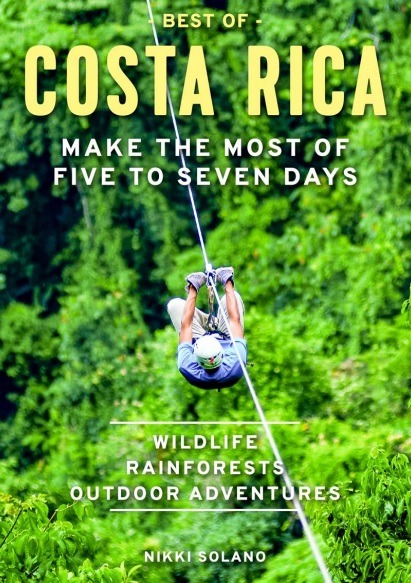

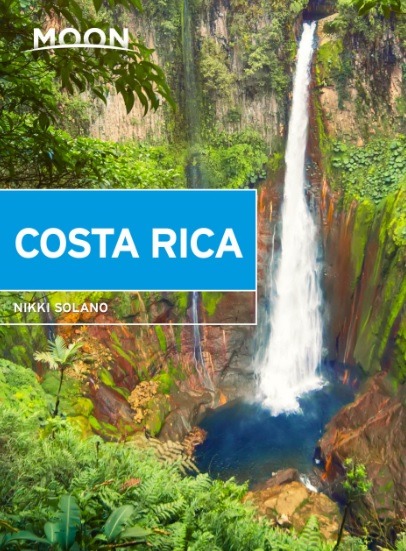

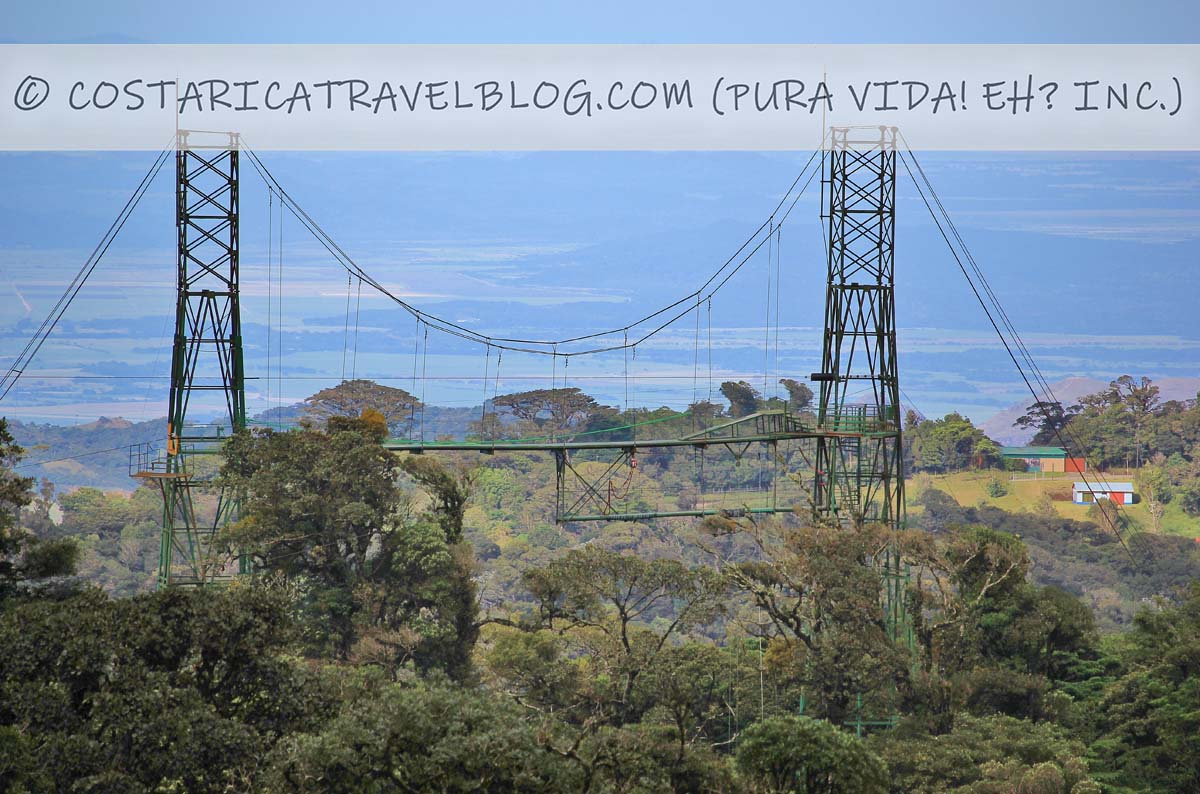

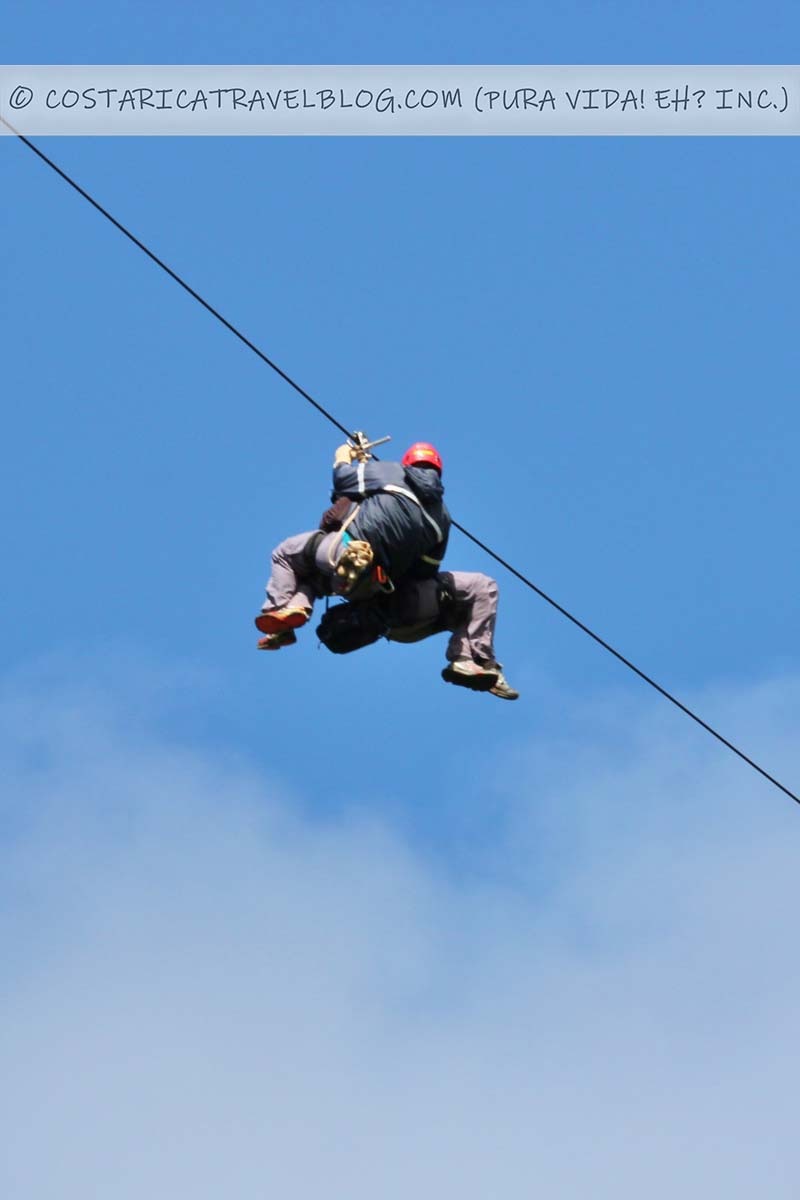
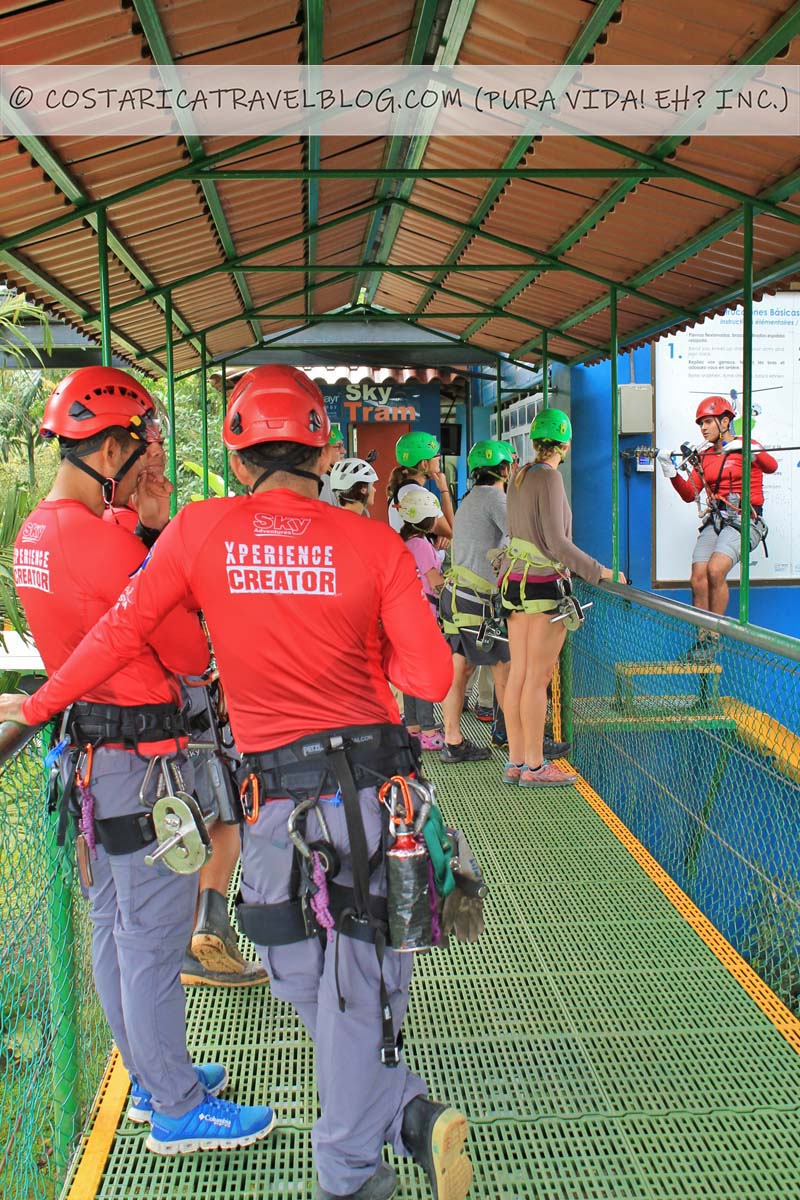

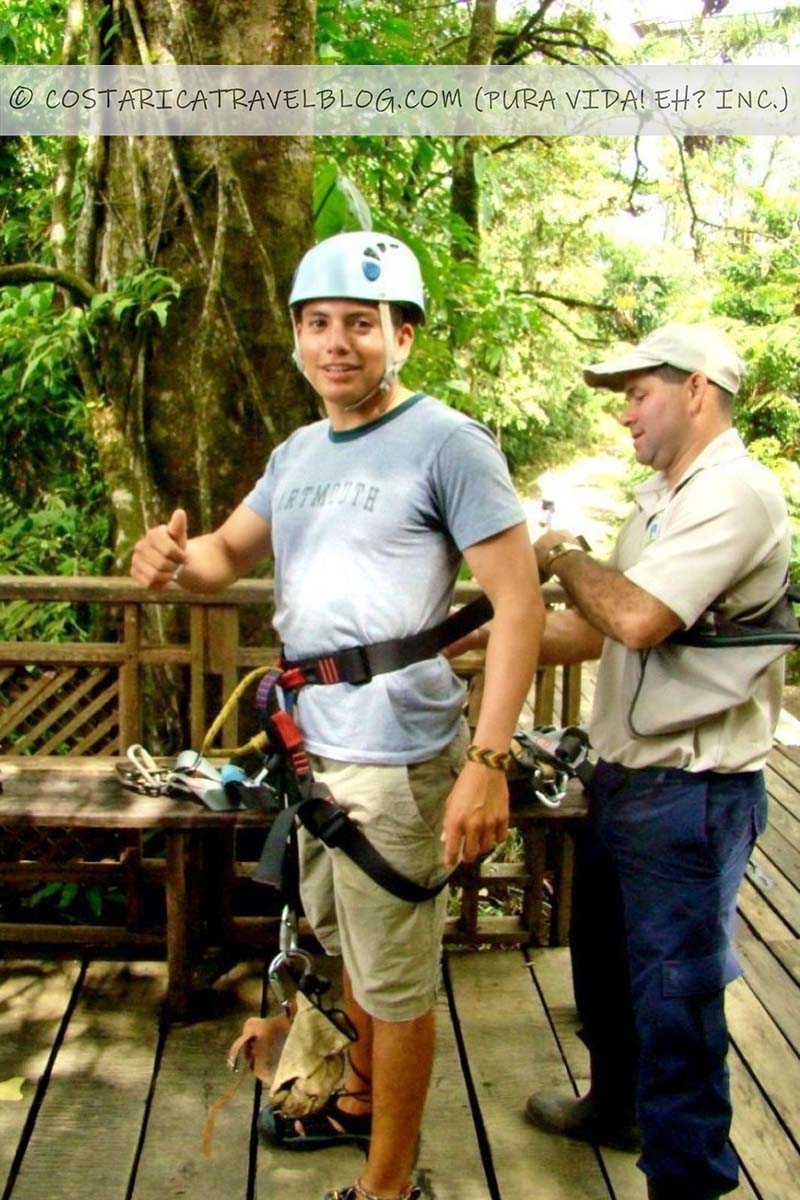










Tagged: adventure, canopy tour, canopy tours, costa rica, costa rica travel, costa rica travel tips, costa rica vacation, nature, rainforest, tourism, travel, travel guide, travel tips, zip line, zipline, ziplining